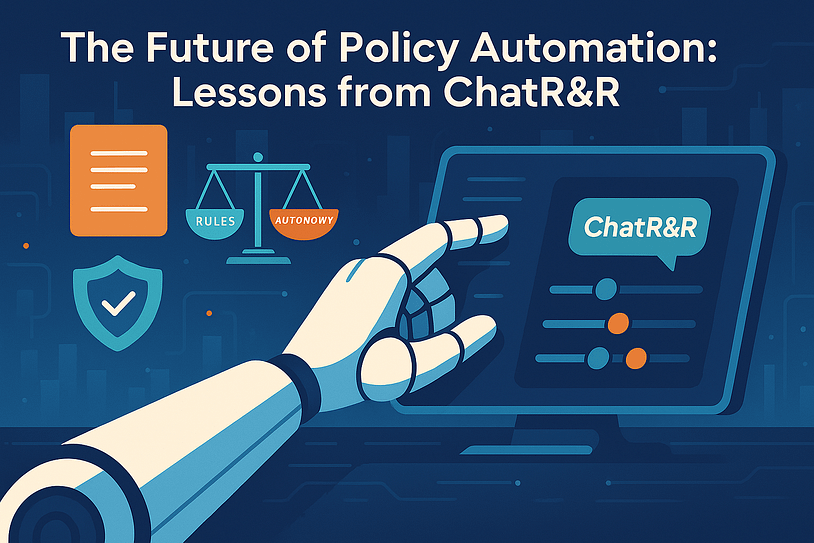Guide Coverage Administration Is Nonetheless the Default. That’s the Drawback.
Even in 2025, many world organizations handle coverage with shared folders, e mail attachments, and outdated PDFs.
“Most groups don’t notice how a lot time they waste looking for the proper model of a coverage,” says Igor Izraylevych, Co-Founder at S-PRO. “Or worse – appearing on outdated ones.”
That’s the context behind ChatR&R, the artificial intelligence system developed with the Worldwide Union for Conservation of Nature (IUCN). The problem: navigating over 2,100 coverage paperwork and surfacing present, related insights with out guide effort.
The outcomes supply a glimpse into the place coverage automation is headed – and why the shift issues now.
Why Coverage Administration Breaks at Scale
Coverage and process administration sounds simple – draft, approve, share, repeat. However at scale, every thing breaks down:
- Dozens of codecs and storage programs
- No model management
- Lack of traceability or audit logs
And that’s earlier than you contemplate person entry, exceptions, and region-specific guidelines.
“Organizations don’t simply want coverage paperwork. They want the power to purpose over them,” Igor explains.
Key Classes from ChatR&R
Search Alone Isn’t Sufficient
AI should transcend key phrases. ChatR&R launched pure language search that understood synonyms, context, and even casual queries. Instance: ask about “ice bears” and get “polar bear” insurance policies – with supply hyperlinks.
Traceability Is Non-Negotiable
Each response included clickable references to the paperwork and paragraphs it pulled from. This eradicated the black-box downside typical in LLMs.
Flexibility Issues
Customers may filter by geography, coverage standing, or publication 12 months – and even add new drafts and ask, “Does this contradict any present coverage?”
Interface Simplicity Wins
“No coaching required” was a design objective. The chat interface made querying intuitive – even for non-technical employees.
Compliance Begins with Infrastructure
Constructed on Microsoft Azure and ISO-certified, the platform meets strict safety and privateness requirements.
These options kind the premise of AI-powered policy automation software for any high-compliance atmosphere.
The Market Panorama for AI in Coverage & Doc Administration
AI-driven governance and coverage instruments are not area of interest – they’re blossoming right into a high-growth market important to fashionable enterprise compliance and technique.
Latest information exhibits that the AI governance market – which incorporates software program for coverage automation, monitoring, and compliance – is predicted to surge from round $227 million in 2024 to over $300 million by 2025, rising at an annual price of about 35–49%.
Individually, AI-driven coverage and governance brokers are projected to develop from $1.9 billion in 2024 to $2.7 billion in 2025, at a 40% CAGR, reaching $10.3 billion by 2029.
In the meantime, broader AI adoption throughout organizations is gaining steam. Surveys present that 78% of firms now use AI in at the least one space of enterprise – comparable to governance, HR, or danger administration. And about 60% of enterprises are already investing in AI-based instruments to transform unstructured textual content (like insurance policies) into structured, searchable codecs.
The Greater Image: What’s Subsequent in Coverage AI
We’re seeing a shift towards:
- Steady coverage intelligence (vs. static paperwork)
- Built-in workflows with triggers, updates, and suggestions loops
- Actual-time compliance checks towards altering regulatory information
As organizations develop extra complicated, instruments should help:
- Multi-language insurance policies
- Cross-border governance
- Function-based entry and exception dealing with
“ChatR&R is just the start,” Igor says. “The AI layer turns into your compliance assistant, your coverage librarian, and your audit associate – multi functional.”
